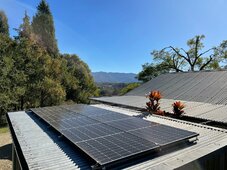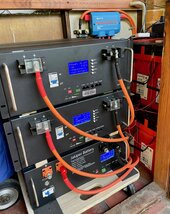You are using an out of date browser. It may not display this or other websites correctly.
You should upgrade or use an alternative browser.
You should upgrade or use an alternative browser.
Backup down under
- Thread starter wattmatters
- Start date
wattmatters
Solar Wizard
Yes - it's a requirement of GT inverters here to use volt-var mode if/when grid voltages are too high (or low). Mine activates regularly and I even track the reactive power by phase. Today's chart (so far) for instance:Does your inverter have Volt-Var?
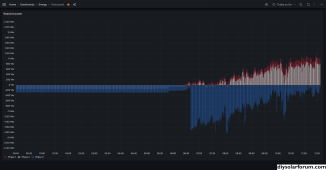
It's also a requirement to have volt-watt mode activated.
We have grid standards for how/when these modes are to operate and to what extent. The standards were harmonised across our main national grid and updated in December 2021, so any GT inverter installed since will automatically have these settings enacted.
Mine was installed some years earlier (2018). The last time I had some high voltage issues (in 2022) I worked with my installer who gave me the instructions to apply the latest volt-var settings (I already had volt-watt mode set). The volt-var feature made a big difference at the time to our peak daytime voltages.
I also did some load rebalancing to add load to one particularly problematic phase. My neighbour has a field array and a single phase supply and that's the phase I typically experience the highest voltages on.
Grid voltage pressure is pretty common here with the high penetration of rooftop PV and the power distribution companies all have different approaches to dealing with it. My previous experiences in dealing with them on it was not great but this time they were more responsive. The fact it was our overnight voltages which were unacceptably high probably had something to do with it.
Brucey
Solar Wizard
Surely a call for the Minister of the Exterior?I large amount of SW facing rooftop. Eventually I will have space for another row of panels (10-12) facing NE, but that has to wait for a renovation which will remove one of our chimneys.
View attachment 176497
All the grid tied PV (40 panels) is on the roof facets on the other side.
View attachment 176498
Field array(s) would be nice but that's not going to be in budget or attain approval by the minister for the interior.
wattmatters
Solar Wizard
I'm already paying them a pretty penny for a power supply which meets standards, so I do expect them to deliver.You could install a buck-boost transformer, so your inverter is blissfully unaware the real grid is 5% or 10% higher than what it sees. ?
Good point. Although like our former Prime Minster, one person possibly holds several secret ministries.Surely a call for the Minister of the Exterior?
Pretty sure one of the big things is if it's decided temperature is acceptable and kills the fan it rises quickly and vice versa of it decided it's hot and cranks fan up temperature drops up untill it decides it's good to slow down or turn off again.You're right, no obstruction yet. How long did it take to get this bit of dust?
Yet, when you removed filter, you observed it ran cooler. Maybe something else happened to change at the same time. A/B A/B test, repeat filter/no filter a couple times, see if operating temperature is correlated.
Check temperature of inlet air. If it is too hot due to discharge of other equipment, could add a baffle to duct them.
Will definitely require monitoring.
Looks like I need to chase up some high cells tomorrow, BMS has stopped charging for today.

wattmatters
Solar Wizard
I think the fact I was able to provide the data (and they were surprisingly interested to get the daytime data as well), I wasn't alone and I was also able to demonstrate full compliance of our grid tied inverter's set up with their requirements certainly helps*. Kudos to them for the fairly quick initial response, and given it sounded like HV equipment failure the turnaround wasn't too bad.If you tried to make noise about voltage in the day time you would have to get pretty lucky to have someone listen to rather than just sweep under the PV rug.
* I know some who fiddle with their settings, e.g. remove or increase their export power limits (ours is 3 kW/phase) or run with volt-watt settings higher than regulation.
wattmatters
Solar Wizard
Please don't take this the wrong way, but this thread is about my DIY backup system in Australia, which has morphed over time as I added features/functionality.Something new today, the old ASIC miners
Some thread drift is natural, and discussion of what others have done in this space I totally get, but I think perhaps discussion of your crypto mining issues is best directed to a more relevant thread, or start your own "Crypto Mining Down Under"
Mostly because it will just get lost here, while a thread about crypto mining will capture the attention of those interested in that stuff and what similar issues they faced and solutions they came up with. Thanks.
wattmatters
Solar Wizard
In October I had installed a small sub-panel and an EV wall charge station in our small garage:

It's a ZJBeny. Also had a data cable installed so it can be reliably controlled via the network.
I have the EVSE connected with the ChargeHQ system. It monitors our grid-tied solar PV system via the Fronius Solar.web service and adjusts the EV charge current so as to remain within the available excess solar PV.
Here's an example showing our consumption and production yesterday:

The water heater and the EV charging are now highly variable loads able to adjust consumption to remain within available excess solar PV.
This is what it looked like on a more challenging day when the clouds starting passing over in the afternoon:
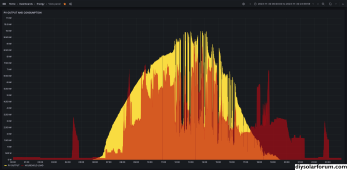
It all does a pretty good job of adjusting to variable power supply.
The large blob of grid imports (red) is mostly our ducted aircon which I don't run from the off-grid system.
My next little project will be setting up the spare AIO inverter I repaired and use that as a charger for the off-grid battery, to be powered by the V2L output of the EV. It's not for regular use but as an additional backup reserve. I just want to have it so I can easily connect it.

It's a ZJBeny. Also had a data cable installed so it can be reliably controlled via the network.
I have the EVSE connected with the ChargeHQ system. It monitors our grid-tied solar PV system via the Fronius Solar.web service and adjusts the EV charge current so as to remain within the available excess solar PV.
Here's an example showing our consumption and production yesterday:

The water heater and the EV charging are now highly variable loads able to adjust consumption to remain within available excess solar PV.
This is what it looked like on a more challenging day when the clouds starting passing over in the afternoon:

It all does a pretty good job of adjusting to variable power supply.
The large blob of grid imports (red) is mostly our ducted aircon which I don't run from the off-grid system.
My next little project will be setting up the spare AIO inverter I repaired and use that as a charger for the off-grid battery, to be powered by the V2L output of the EV. It's not for regular use but as an additional backup reserve. I just want to have it so I can easily connect it.
wattmatters
Solar Wizard
Time to trim the redtip leaves!
wattmatters
Solar Wizard
Ha, yeah that's an old pic. My main threat are the row of Jacarandas to the north of the main system. They get a haircut each year in Autumn.Time to trim the redtip leaves!
wattmatters
Solar Wizard
Tested using the vehicle to load (V2L) system of our car to charge our home battery, made a video of it:
This is intended as supplemental charge source should we experience an extended grid power outage and the off-grid PV isn't able to keep up with the energy demand. Similar to using a generator to charge, except I'm plugging into the car.
I still have the 4 kW AIO unit I started with, it's doing nothing at the moment so why not?
Lots of people in the southern state of Victoria are currently experiencing extended grid power outages after wild storms caused wide spread damage to both HV transmission lines and the wider distribution network. It also took a major coal power station (Loy Yang A) off line as it lost grid connection.
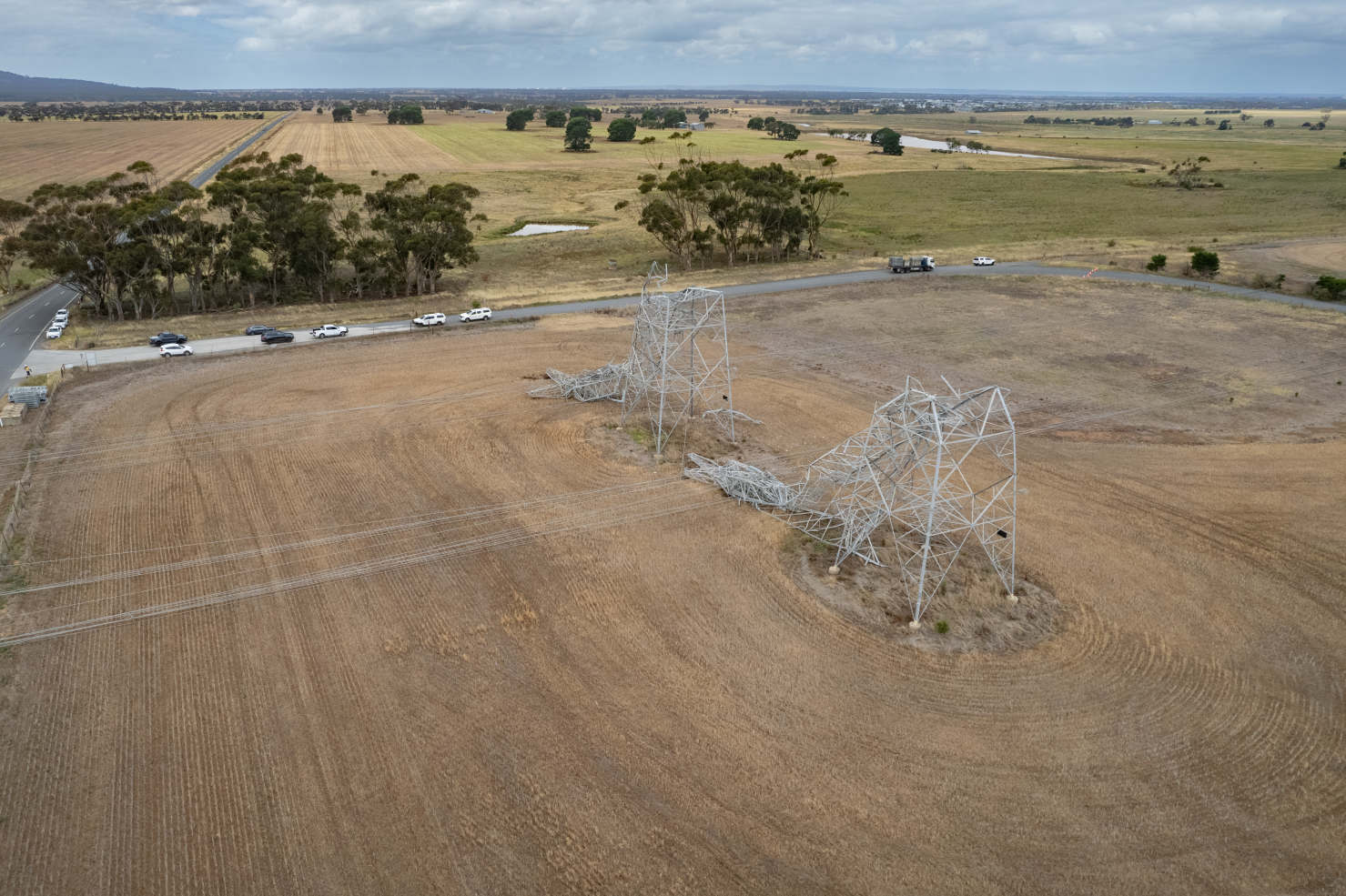
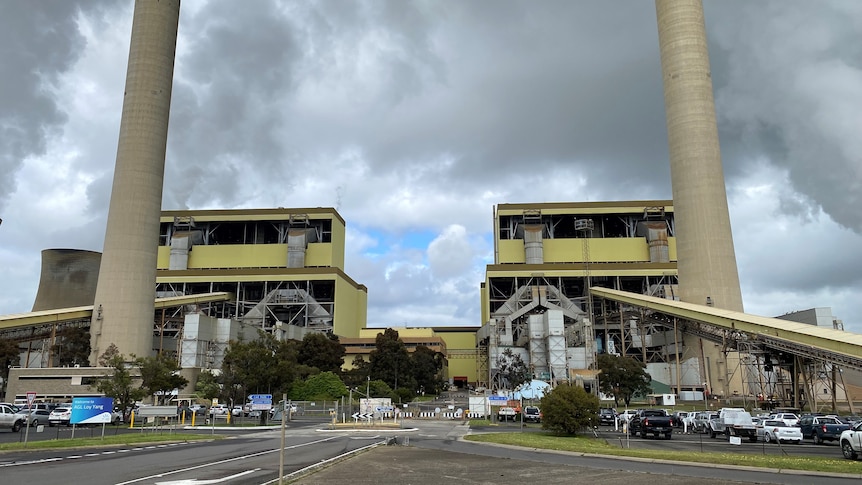
 www.abc.net.au
www.abc.net.au
It's always a cafe owner they interview to get a personal view of the effect of a power outage.
This is intended as supplemental charge source should we experience an extended grid power outage and the off-grid PV isn't able to keep up with the energy demand. Similar to using a generator to charge, except I'm plugging into the car.
I still have the 4 kW AIO unit I started with, it's doing nothing at the moment so why not?
Lots of people in the southern state of Victoria are currently experiencing extended grid power outages after wild storms caused wide spread damage to both HV transmission lines and the wider distribution network. It also took a major coal power station (Loy Yang A) off line as it lost grid connection.

Power may take days to restore in Victoria as coal-fired plant drops offline and storms damage infrastructure
Loy Yang A, one of Victoria's three remaining coal-fired power stations, is offline and storms are affecting electrical infrastructure, leaving half a million customers without power.
It's always a cafe owner they interview to get a personal view of the effect of a power outage.
wattmatters
Solar Wizard
As of this week I am on a new retail electricity plan. My last supplier changed their tariffs and the changes were ugly. So I swapped providers.
One of the features of the new plan is there are free energy periods, from 12-2PM on Saturdays and Sundays. It's a function of the ever increasing supply of renewable energy in our grid.
So I am now taking advantage. I have set up automations for EV charging and to charge the battery with supplemental grid power.
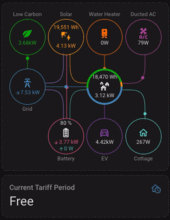
Normally I'd be horrified to be importing so much power from the grid but the the energy paradigm has changed. They want load so I'm happy to oblige.
I'd was planning to also run the water heater at full power but it's already fully heated via the PV diverter this morning. I could amp up the EV charge rate a bit more, but I don't want to push it on my first go.
At 4.4 kW, the EV will get between 50-60 km of range added in each session. At a max AC charge rate I can add ~150-160 km/week for no charge (assuming the car is here of course).
The ~3.8 kW going to the home battery will add a handy 7.5 kWh and ensure the battery is filled up.
On sunny days of course I have to consume our solar PV first but on cloudy days like today our PV is not generating a great deal of power so this works out very nicely.
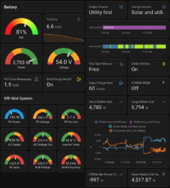

One of the features of the new plan is there are free energy periods, from 12-2PM on Saturdays and Sundays. It's a function of the ever increasing supply of renewable energy in our grid.
So I am now taking advantage. I have set up automations for EV charging and to charge the battery with supplemental grid power.

Normally I'd be horrified to be importing so much power from the grid but the the energy paradigm has changed. They want load so I'm happy to oblige.
I'd was planning to also run the water heater at full power but it's already fully heated via the PV diverter this morning. I could amp up the EV charge rate a bit more, but I don't want to push it on my first go.
At 4.4 kW, the EV will get between 50-60 km of range added in each session. At a max AC charge rate I can add ~150-160 km/week for no charge (assuming the car is here of course).
The ~3.8 kW going to the home battery will add a handy 7.5 kWh and ensure the battery is filled up.
On sunny days of course I have to consume our solar PV first but on cloudy days like today our PV is not generating a great deal of power so this works out very nicely.


wattmatters
Solar Wizard
Today's project was setting up a second instance of Solar Assistant dedicated to monitoring our server rack batteries. We have 1 x Jakiper and 2 x generic 100 Ah 51.2 V server rack units. They all use the same PACE BMS, or at least close enough.
I had a spare Raspberry Pi 4 after I had migrated my Home Assistant onto a mini PC, so thought I'd give it a go.
A little trial and error on using the right battery connections and dip switch settings but have it working now:

I already had a Jakiper supplied cable for connecting to the Raspberry Pi USB, so that removed all the hassle of trying to figure that part out.
Here are the two dashboards side by side:

Why a second instance?
Well my system battery is a hybrid LiFePO₄ (3 x 100Ah server rack units ~15 kWh) + a bank of sealed lead acid backup batteries (~20 kWh).
I have a Victron Smart Shunt monitoring the whole hybrid battery and that is the source of truth for the whole system.
Unfortunately Solar Assistant does not (at least not yet) enable monitoring of two different types of battery data inputs. So I could have chosen to just monitor the server rack battery, or the Victron shunt, but not both.
This way I can now see both and it will be good to have the server rack battery data constantly monitored and recorded.
If you look at the snapshot above, can see at that moment (it updates every second) there was 2942 W going into the whole battery according to the Victron shunt while the combined battery BMS reports charging at 2895 W. While there may be some accuracy differences between them, that is about expected as the balance would be residual current going into the sealed lead acid.
Also note the SOC differences:
Whole battery showing 84%
LiFePO₄ showing 57%
Since the whole battery SOC is based on 35 kWh, 84% means there is 16% of 35 kWh = 5.6 kWh to fully charged.
LiFePO₄ at 57% means 43% of 15 kWh = 6.45 kWh to fully charged.
Obviously there is a discrepancy there but that is probably down to a few things, once of them being the PACE BMS SOC is probably wrong and needs a recalibration.
I will now have a much better view on the state of charge of the LiFePO₄ during regular daily cycling and see how the energy supply is shared between the LiFePO₄ and SLA at difference states of charge.
Next up is setting up the MQTT link with Home Assistant.
I had a spare Raspberry Pi 4 after I had migrated my Home Assistant onto a mini PC, so thought I'd give it a go.
A little trial and error on using the right battery connections and dip switch settings but have it working now:

I already had a Jakiper supplied cable for connecting to the Raspberry Pi USB, so that removed all the hassle of trying to figure that part out.
Here are the two dashboards side by side:

Why a second instance?
Well my system battery is a hybrid LiFePO₄ (3 x 100Ah server rack units ~15 kWh) + a bank of sealed lead acid backup batteries (~20 kWh).
I have a Victron Smart Shunt monitoring the whole hybrid battery and that is the source of truth for the whole system.
Unfortunately Solar Assistant does not (at least not yet) enable monitoring of two different types of battery data inputs. So I could have chosen to just monitor the server rack battery, or the Victron shunt, but not both.
This way I can now see both and it will be good to have the server rack battery data constantly monitored and recorded.
If you look at the snapshot above, can see at that moment (it updates every second) there was 2942 W going into the whole battery according to the Victron shunt while the combined battery BMS reports charging at 2895 W. While there may be some accuracy differences between them, that is about expected as the balance would be residual current going into the sealed lead acid.
Also note the SOC differences:
Whole battery showing 84%
LiFePO₄ showing 57%
Since the whole battery SOC is based on 35 kWh, 84% means there is 16% of 35 kWh = 5.6 kWh to fully charged.
LiFePO₄ at 57% means 43% of 15 kWh = 6.45 kWh to fully charged.
Obviously there is a discrepancy there but that is probably down to a few things, once of them being the PACE BMS SOC is probably wrong and needs a recalibration.
I will now have a much better view on the state of charge of the LiFePO₄ during regular daily cycling and see how the energy supply is shared between the LiFePO₄ and SLA at difference states of charge.
Next up is setting up the MQTT link with Home Assistant.
wattmatters
Solar Wizard
And after a bit of mucking about I managed to get the MQTT connection working with Home Assistant. Mine is not straightforward as I use an MQTT bridge in Home Assistant (which enables multiple MQTT sources).
Anyway, it's working:
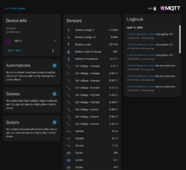

So now the fun starts with dashboards, some relevant automations, creation of some custom template sensors (e.g. to track cell voltage ∆) and charts to monitor the total pack vs LiFePO₄ charge and discharge behaviour.
Anyway, it's working:


So now the fun starts with dashboards, some relevant automations, creation of some custom template sensors (e.g. to track cell voltage ∆) and charts to monitor the total pack vs LiFePO₄ charge and discharge behaviour.
wattmatters
Solar Wizard
Similar threads
- Replies
- 2
- Views
- 194
- Replies
- 11
- Views
- 369
- Replies
- 13
- Views
- 430





